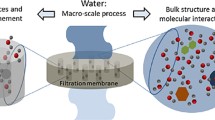The notion of water is not a static notion but a dynamic one.
Logical thought has not grasped it either accurately or fully thus far.
V.I. Vernadsky
Abstract
With the development of computer information technologies, humankind has begun to study actively the nanoworld of water as the evolutionary foundation of the “living matter” of the planet (V.I. Vernadsky). Water and water solutions are a continuously reproduced, inexhaustible, and essential natural condition of existence. It is hydrogen bonds that ensure the formation of DNA double helixes as the evolutionarily fixed method of biological information transfer, which largely determines the rate and inherited parameters of the development of the living organism. The author of this article is of the opinion that water as the primary nanostructure of the existence of nature is the foundation of human life and health. Special attention is paid to the contribution of scientists from the Russian Academy of Sciences to the above topic.
Similar content being viewed by others
References
V. I. Vernadsky, History of Natural Waters (Nauka, Moscow, 2003) [in Russian].
V. A. Matyukhin and A. N. Razumov, Human Ecological Physiology and Rehabilitation Medicine (Meditsina, Moscow, 2009) [in Russian].
V. I. Ferronskii and V. A. Polyakov, Isotopy of the Earth’s Hydrosphere (Nauchnyi Mir, Moscow, 2009) [in Russian].
G. A. Zavarzin, “The non-Darwinian domain of evolution,” Herald Russ. Acad. Sci. 70 (3), 252–259 (2000).
S. L. Shvartsev, “Where did global evolution begin?,” Herald Russ. Acad. Sci. 80 (2), 173–182 (2010).
I. L. Andreev, “Man and the bacterial world: Problems of interaction,” Vestn. Ross. Akad. Nauk 79 (1), 41–49 (2009).
V. N. Parmon, “On the possibility of observing kinetic isotopic effects in the life cycles of living organisms at ultralow concentrations of deuterium,” Herald Russ. Acad. Sci. 85 (2), 170–172 (2015).
Yu. E. Sinyak, A. I. Grigor’ev, V. M. Skuratov, et al., “Fractionation of stable hydrogen isotopes in the human organism under the conditions of a thermal chamber,” Kosm. Biol. Aviakosm. Med. 40 (5), 38–41 (2006).
A. L. Buchachenko, “Magnetic isotopy: New horizons,” Herald Russ. Acad. Sci. 80 (1), 22–28 (2010).
A. L. Buchachenko and D. A. Kuznetsov, “Nuclear–magnetic control over energy carrier synthesis in living organisms,” Herald Russ. Acad. Sci. 78 (4), 346–350 (2008).
A. L. Buchachenko, New Isotopy in Chemistry and Biochemistry (Nauka, Moscow, 2007) [in Russian].
Yu. E. Sinyak and D. V. Rakov, “Prospects for the use of water with changed isotopic composition in medicine,” Kosm. Biol. Aviakosm. Med. 41 (6/1) (2007).
Yu. E. Sinyak and A. I. Grigor’ev, “Optimal isotope composition of biogeneous chemical elements on board manned spacecraft,” Kosm. Biol. Aviakosm. Med. 30 (4), 26–30 (1996).
V. G. Ganelin, “What is life geologically. Rereading V.I. Vernadsky,” Vopr. Filos., No. 6, 66–81 (2008).
A. I. Rakitov, “Science and science studies in the 21st century,” Herald Russ. Acad. Sci. 73 (1), 40–49 (2003).
V. A. Nepomnyashchikh, Cellular Bioregulators in the Complex Therapy of Eye Diseases (RegBioMed, Moscow, 2010) [in Russian].
A. V. Oleskin, “Neurochemistry and symbiotic microflora of humans: Biopolitical aspects,” Herald Russ. Acad. Sci. 79 (3), 274–280 (2009).
I. L. Andreev, “Philosophical aspects of neurophysiology,” Herald Russ. Acad. Sci. 85 (3), 173–179 (2015).
Neurodegenerative Diseases: From the Genome to the Whole Organism, in 2 vols., Ed. by M. V. Ugryumov (Nauchnyi Mir, Moscow, 2014) [in Russian].
Author information
Authors and Affiliations
Corresponding author
Additional information
Original Russian Text © I.L. Andreev, 2017, published in Vestnik Rossiiskoi Akademii Nauk, 2017, Vol. 87, No. 2, pp. 145–153.
Igor’ Leonidovich Andreev, Dr. Sci. (Philos.), is Chief Researcher of the RAS Institute of Philosophy.
Rights and permissions
About this article
Cite this article
Andreev, I.L. The aquatic nanofoundation of human life and health. Her. Russ. Acad. Sci. 87, 75–82 (2017). https://doi.org/10.1134/S1019331617010063
Received:
Published:
Issue Date:
DOI: https://doi.org/10.1134/S1019331617010063




